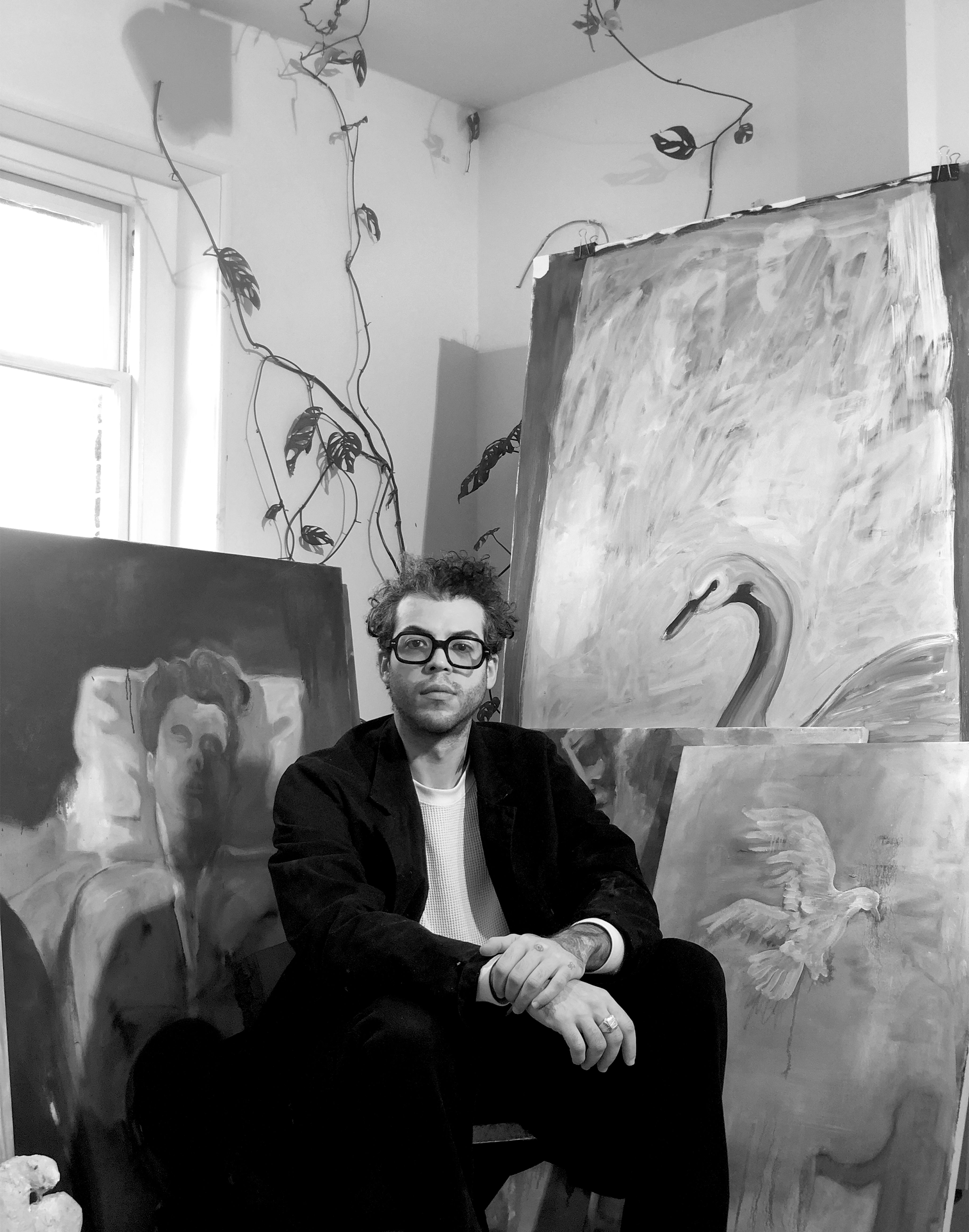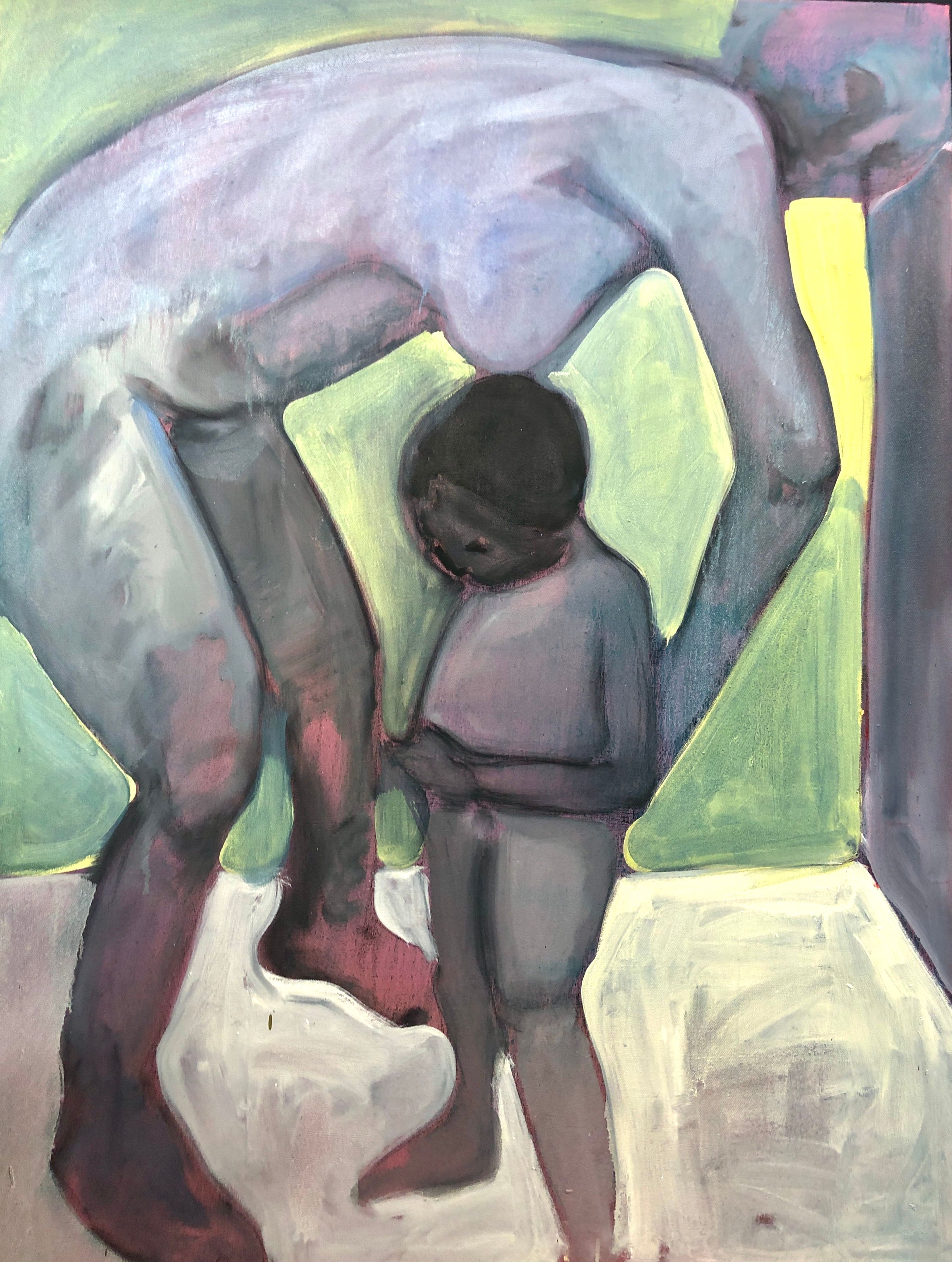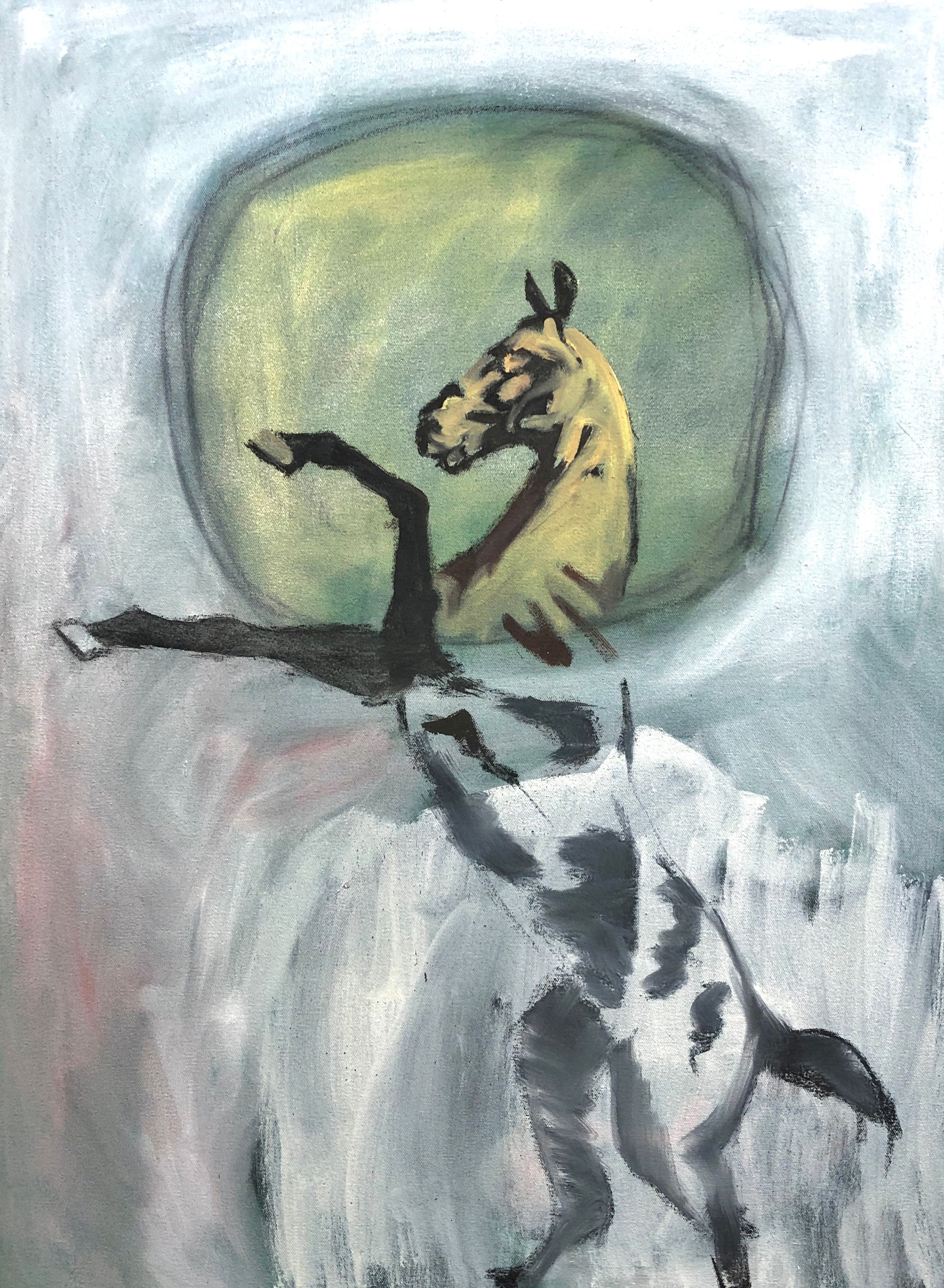
Leyman Lahcine is an artist and former fashion designer whose globally exhibited work has often explored the vagaries of human connection and communication, and his upcoming show Tides of Consciousness represents a radical evolution in this regard. His initial foray into art as a form of expression came in the form of colourful faux-naïve paintings that took their cues from surrealist films such as The City of Lost Children and the disarming humour of British artist David Shrigley, and, he was, for a time, an unlikely mainstay of the tabloids, being the former husband of Paloma Faith. However, like many true artists, he had no great desire to be in the public eye. Having left the fashion industry and separated from his partner, these days the French-born artist is focused solely on his painting, which has evolved from his early drawing works into the richer, more soulful and classical forms that will be exhibited at The Sarabande Foundation at the end of this month. Here, he speaks to House Collective Journal about deep-diving into the the psychoanalytic theory of Jung, the need to find equilibrium in the digital era, and the ways in which art can help us come to a better understanding of ourselves.
What drives you as an artist, and what underpins this new series of paintings?
As individuals, we exist in a complex snarl of external influences, expectations, and parameters shaped by the world around us. These influences shape our perceptions, beliefs, and behaviours, which guide us towards certain ways of thinking. I believe creativity is the friction between one’s soul against these external influences. If you are of an inquisitive nature, you can see that these frictions are generating questions, and what drives me creatively is my curiosity to explore those questions, which always provide gateways to try to understand one’s purpose. There is a conversation happening in all art forms between the personal and collective unconscious and conscious mind. My latest series takes on a Jungian perspective, and explores the tidal movement of this dialogue. I found myself wanting to explore his concept of archetypes, such as mother and child, and how we perceive and interpret them – they are symbols that seem to resonate deeply within us all, even if we're not fully aware of them.

You originally worked in fashion design – did you always know you would move into painting?
My interest in art has been constant. From a very young age, I have always done drawings, and loved looking at art, but I never considered art as a serious career option when I was growing up. My background and upbringing didn't include any aspirations towards art as a career. Instead, I found myself wandering around in life, and ended up pursuing fashion design as a professional option, even though it made me a bit miserable. However, in retrospect, I realise that I have always been an artist. I was always sensitive to the invisible nuances and contradictions of the human being. I was just missing the language to respond to it, which created a hole inside – a disconnection between who I was entirely, and the world around me; my whole life was spent trying to create hyphens to connect with the world. Painting came very slowly and progressively. Initially, I was more focused on illustration work, often doodling funny sketches, and I had a few shows, but nothing I took very seriously. Those doodles were my way of finding humour in the world, and coping with its challenges – to be a painter, I realised that I needed to consider more deeply what I wanted to say that I couldn’t say through writing or other visual art.

Which art movement resonates most powerfully with you as an artist?
I've always been drawn to artists and art that challenges the traditional notions of a 'good image' or the conventional ideas of the sublime often associated with art. I like art that scratches the surface and goes to look for beauty and light in darkness. German expressionism is probably my favourite art movement. It cut straight to the essential. It was no longer about depicting something in its most perfect or desirable form, reflecting a beautiful interpretation of reality. It was about recognising the broken self and emotional intensity. It was about the primal aspect of human nature. Jean-Paul Sartre said the artist's role is to create works that express the individual's subjective experience and reveal the human condition. I stand by this affirmation. Artists are the messenger of the invisible. The role is to deliver messages that get us closer to understanding ourselves.
As an artist with such a desire to explore the human condition, what do you think about the rise of generative art?
The rise of AI forces us into an existential corner. It makes us reconsider our ownership over language, but also blurs the lines of our understanding of what is alive, which used to essentially be attached to organic forms. The numeric era asks the question of what really makes us human - is it the quantity of information we can treat, or is it the quality of the relationship we entertain with others? The rapidly increasing illnesses of our souls (loneliness or depression) we experience grow larger as we connect deeper with technology. But it also reminds us that what makes us human to the core is our capacity to feel. It is our capacity to fully connect with the things that constitute life – the pain of grief, a smile from a stranger, a ray of sunshine, or the unspoken nuances of a new romance. Is AI technology taking us further away from ourselves, or is it a rediscovery of our humanity? What’s really missing in this digitalisation era is a scaffolding approach to technology in order to find equilibrium. It is happening way too fast.

How do notions of beauty play out in your latest works?
I talked earlier about German expressionism and the divorce of the traditional ideas of the sublime in art. Consider this: You can look at an horizon at dawn and be moved by its beauty, yet, true beauty is often concealed, hidden behind layers. To find it, we must learn to scratch away these obstructing layers. For instance, picture a grey rock, the type that finds its way into your shoe, causing irritation with every step. One might initially dismiss it and find it annoying or uninteresting. However, that same grey rock is also a fragment of time, the witness of the earth's movements, shaped over thousands of years of earth pressure, weather, movement, erosion. That rock held so many stories before it ended up in your shoe. Also, that same grey rock in your shoe might be a raw diamond rock! You’d never know if you don’t look. That is the sort of beauty I explore in my work, without being too cliche or dramatic. Often when looking at my work, people highlight the melancholia, or the sadness that it conveys. But it is only reflecting the melancholia or the sadness of the observer. Just like the alchemist peeling away layers of matter in search of its true essence, or the dervish Sufi spinning away his ego to uncover truth, we must learn to find our ways through to our inner beauty.
Tides of Consciousness opens at The Sarabande Foundation February 29th. Find out more here.